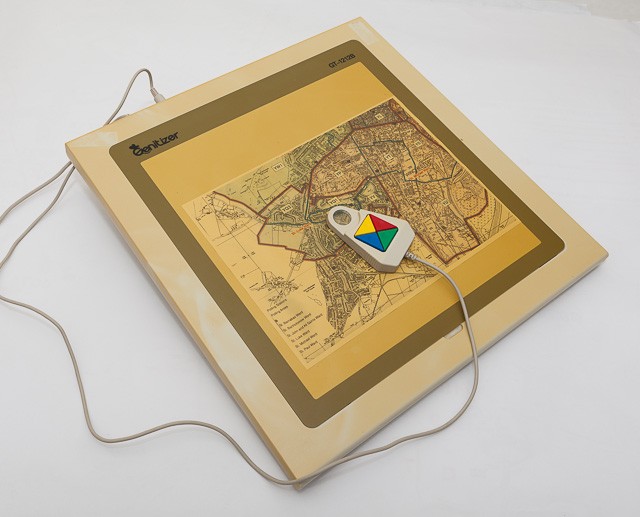
This device is used for digitising things off paper documents, such as maps. It was sold in the early 1990s and is now completely obsolete. It only works on Windows 3.1 and 95, and no software is available for later versions of windows, although I believe there may be drivers for Unix systems, if you want to use the tablet as if it were a mouse.
I still have mine, and it works well. It has a large, flat, digitising area measuring 305 by 305 mm, with a transparent overlay held down with Velcro that can be used to hold a document in place.
It's output coordinates range from (0,0) at the bottom left of the area to (5000,5000) at the top right. Hence, its resolution is about 0.06 of a millimetre. This resolution is more than enough for practical purposes, since the slightest movement of the puck will change the coordinates.
The User Manual states that the accuracy and repeatability is ±0.25 mm.
It can be used either flat, or with the back slightly raised (as shown in the photo) by pop-out legs.
As can be seen in the photo, the plastic casing is somewhat yellowed with age, as is the transparent overlay, but this does not affect usability.
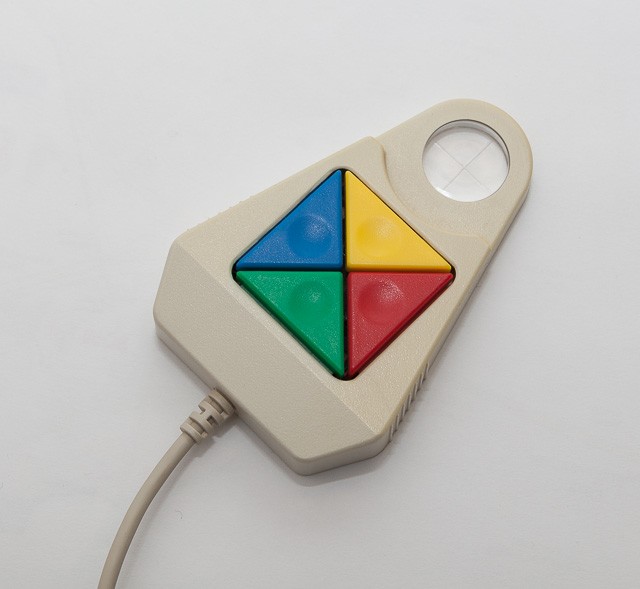
It has a four-button puck.
The puck buttons are numbered as follows:
1: yellow
2: blue
3: green
4: red
The buttons all behave in the same way (i.e. none of them do anything special except to send the coordinates out).
When appropriately configured, and used in its absolute mode, it outputs on an RS-232 serial cable a single line of ASCII text every time one of the puck buttons is pressed. The format of this text is like this example:
0576,1234,2<cr><lf>
where 0576 is the X coordinate of the puck, 1234 is the Y coordinate, and 2 is the number of the puck button that was pressed.
The puck buttons are not debounced in the hardware. Therefore it is desirable to include debouncing logic in the software that reads the serial port, or you will record three or more points per button push. The logic I use is to store the first coordinate line that I receive from the tablet, record the time of day and, if any further coordinate lines are received within 0.2 seconds of the first, throw them away.
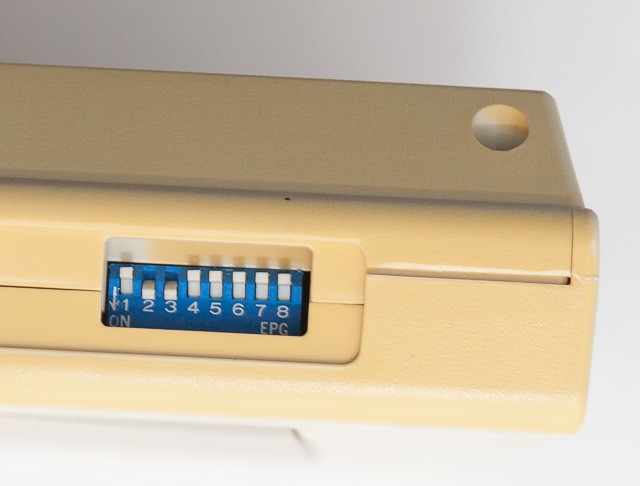
The device is configured by means of some DIP switches at the back. The photograph shows the DIP switch settings to produce the output described above, at a line speed of 9600 Baud, one stop bit, no parity. There are other settings that make the tablet comply with the old Microsoft serial mouse protocol.
| Sw1 | Sw2 | Operating mode |
|---|---|---|
| off | off | Digitizer binary mode |
| off | on | Digitizer ASCII mode |
| on | off | Mouse Systems mouse |
| on | on | Microsoft mouse |
If Sw3 is on, parity is disabled; if it is off, odd parity is enabled.
If Sw4 is off, line speed is 9600 Baud fixed; if it is on, Autobaud speed is set (150-91200 bps).
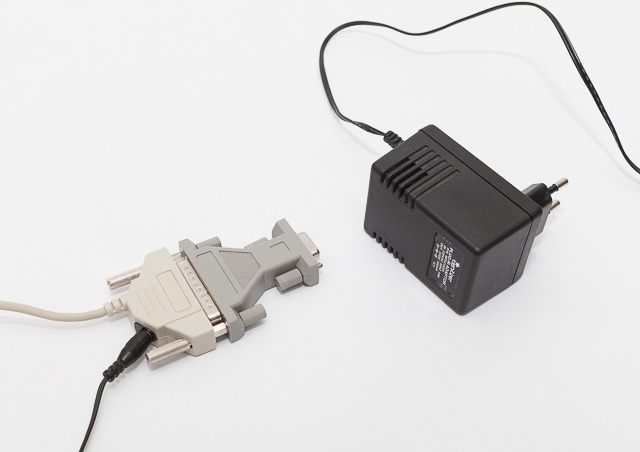
The device is powered unusually by means of a mains adaptor whose output plugs into the shell of a specially-adapted 25-pin RS232 female socket. The adaptor produces 5V DC at 350 mA and ±10% regulation, or so it says. This power is sent up the serial cable to the device. The black plug that plugs into the 25-pin socket looks to be a standard DC power plug, 5.5 mm outside diameter, 2.1 mm inside diameter, shaft length 9.5 mm such as Maplin's HH60Q.
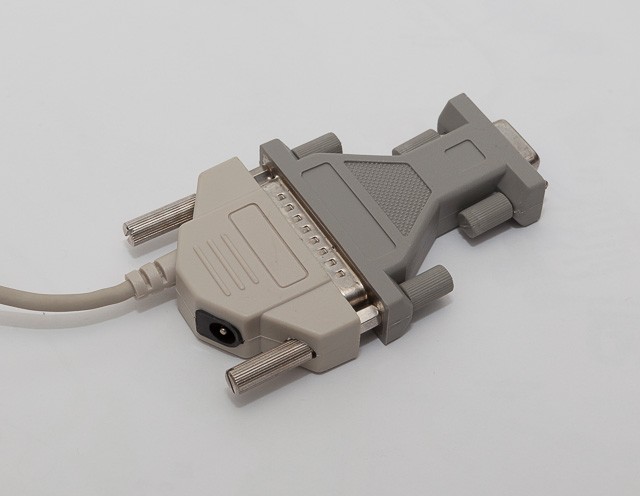
The principal purpose of the 25-pin socket is, of course, to connect the device to a computer. You will probably need to get a male 25-pin to female 9-pin RS232 adaptor (shown in grey in the photos) to enable the serial cable to be plugged into the COM1 port on the back of your PC.
Not having a driver for the device, and not trusting to download off the internet anything purporting to be a driver for it, I wrote a small program in C++ to read the COM1 serial port and write the coordinates to a text file. Once in a file, you can do what you like with them.
A primary requirement is to have some kind of calibration of the tablet. That is, if digitising some features off a map, one needs to click on three points on the map for which the map coordinates are known. For example points on grid lines near the top left, bottom left and bottom right of the map. Then software is needed to translate the tablet coordinates into the map coordinates. This is known as an affine transformation. I wrote a program in PHP that applies the transformation to whatever I have digitised. This program reads a text file of digitised points, and assumes that the first three are to calibrate the transformation. You need to edit the program source to define variables named $r0/1/2 to be the corresponding real world coordinates. You can see this program here.
The nearest modern tablet I can find is the Wacom Intuos4 XL CAD, but it costs £700, so you can see why I made the effort to resurrect my Genitizer.
It is also possible to send commands to the Genitizer over the serial line to set its operating mode etc. but I don't find it necessary to use them. The commands are described in Appendix D of the User Manual, scans of which can be dowloaded from first page and second page.
Peter Facey, Winchester, England
20210504 Replaced broken link to Microsoft serial mouse protocol
20181224 Replaced broken link with PHP download
20141106 originated